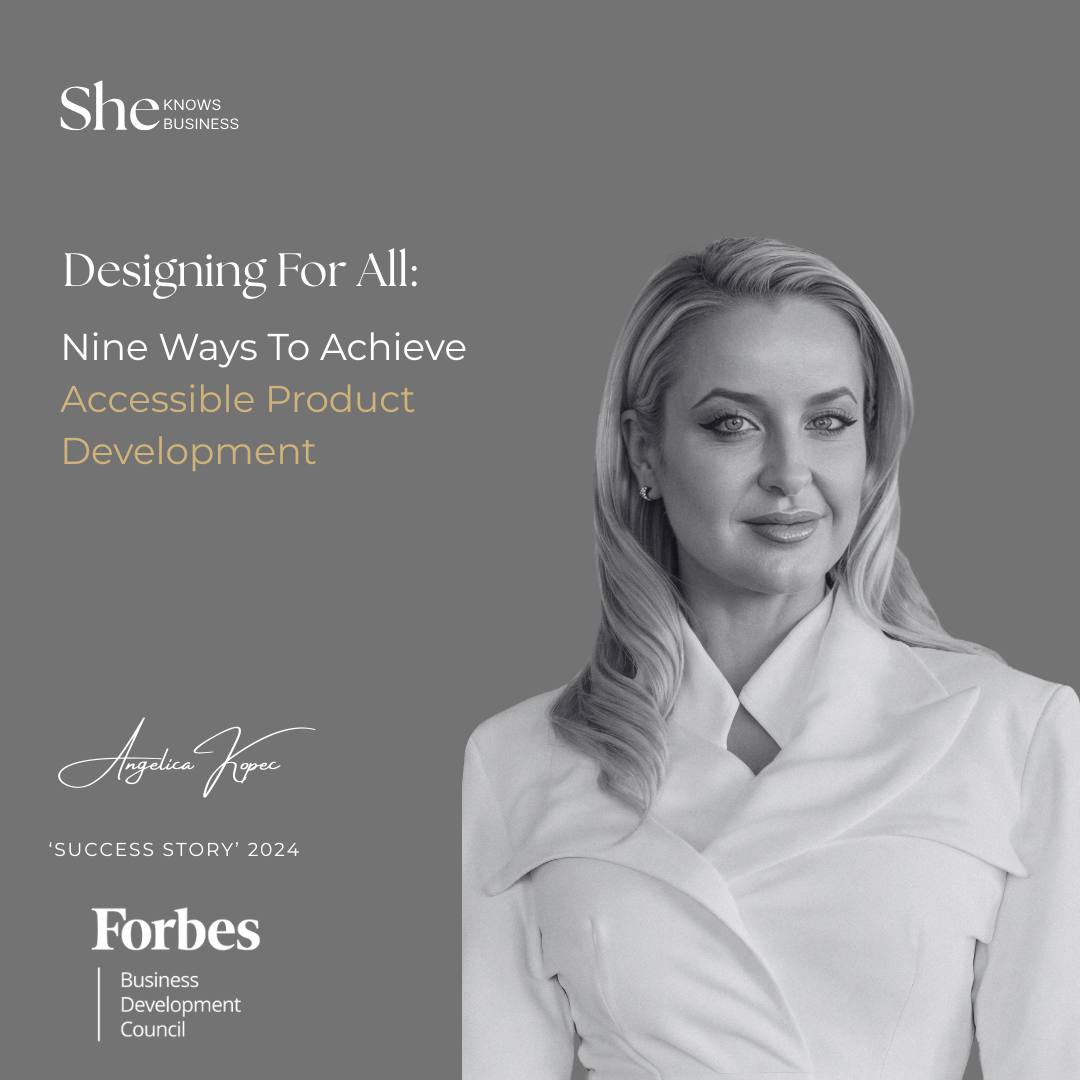
Designing For All: Nine Ways To Achieve Accessible Product Development
Design isn’t just about aesthetics anymore—it’s about how people feel when they engage with what you’ve created. Today’s consumers are actively seeking products that ease stress, promote mindfulness, and foster emotional wellbeing. That means product design must evolve from functionality to empathy—creating experiences that serve both practical and emotional needs.
Recently, I contributed to a Forbes Expert Panel discussion titled “Designing For All: Nine Ways To Achieve Accessible Product Development.” During this conversation, nine professionals shared strategies on how design teams and business developers can collaborate to create products that are inclusive, adaptable, and beneficial for all. Below are some of the key insights we explored:
A core principle I highlighted is the importance of designing adaptable products. Products should go beyond basic accessibility features and offer customizable, modular interfaces that adjust to the varying needs of users. For instance, sensory-friendly modes, adjustable layouts, and voice or gesture controls can enhance accessibility and adaptability. Engaging with diverse user groups during testing ensures that products evolve based on real-world needs, rather than assumptions.
Another valuable strategy is taking an outside-in, end-user approach. Business developers play a vital role in providing the end-user perspective to design teams. By considering how actual users interact with products and what their specific needs are, we ensure that the final product fits the market and delivers value to all.
It’s crucial to ask the target audience to engage in the testing process early on. Involving neurodiverse individuals, people with disabilities, and other underrepresented groups in the design and testing phases ensures products meet the needs of all potential users. This feedback loop leads to more inclusive and innovative solutions that better serve the diverse populations they’re intended for.
Building a cross-functional POD team—combining business developers, designers, and focus groups—ensures products meet the needs of the target market from the start. By engaging potential buyers early in the design process, you create a more consumer-centric product and pave the way for a successful launch. This approach also enables you to refine the product before it reaches the final stage.
One of the most effective ways to ensure accessibility is to give users the ability to add or remove features based on their needs. Think of it like building with LEGO blocks—a solid foundation that can be customised with modular features. This flexibility ensures the product serves a wide variety of users, each with different preferences and requirements.
Lastly, implementing pilot programs before launching a product is essential for ensuring long-term success and accessibility. By gathering feedback from users early on, during the vision phase, we can fine-tune designs and address any potential issues before they become obstacles.
Designing for accessibility isn’t just about meeting legal requirements—it’s about creating products that make a real, positive impact on users’ lives. Through empathy, collaboration, and strategic design, we can ensure that our products are not only functional but truly inclusive.
Looking to create more accessible products and improve your design process?
I invite you to connect with me to explore strategies for building inclusive products that meet the needs of all users.
👉 Book a consultation
👉 Discover our services
To read the full Forbes article and gain further insights, check it out here: [Link to Forbes Article]